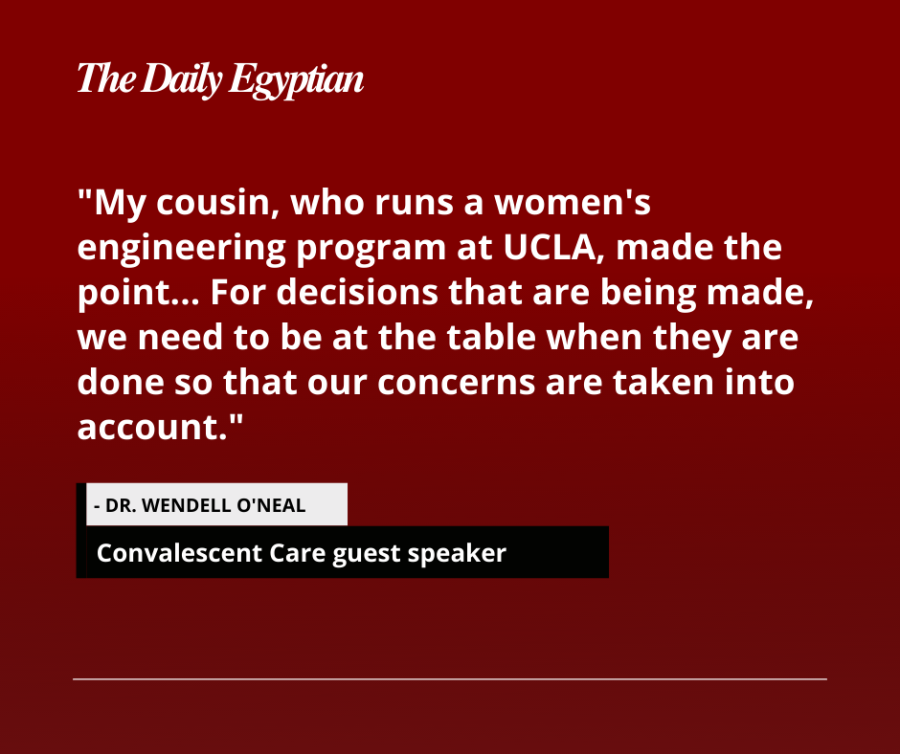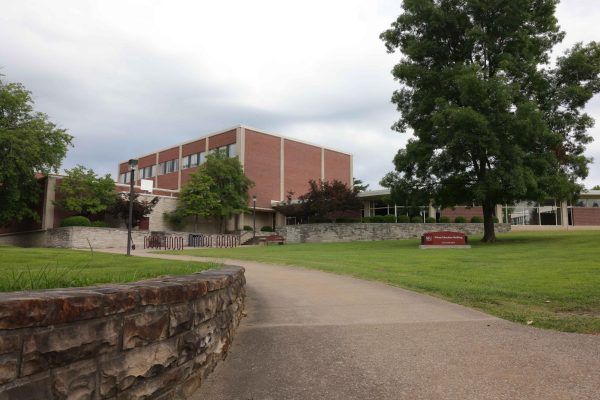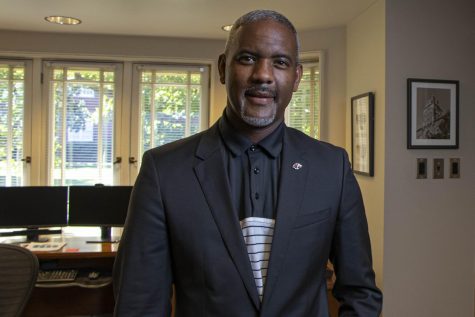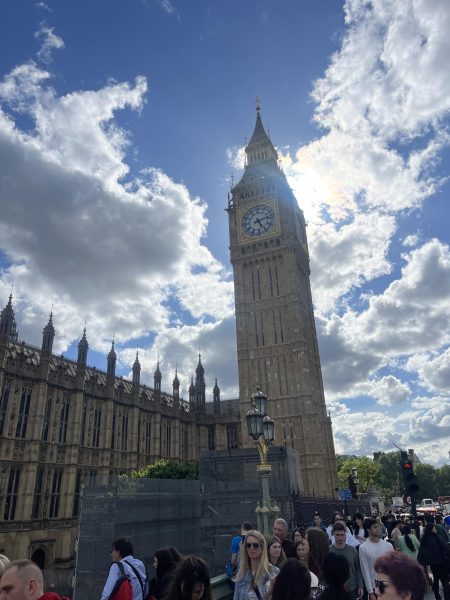University Museum’s Convalescent Care exhibit highlights Black people in STEM
University Museum at Southern Illinois University at SIU held a presentation from 4:00pm to 6:00pm with guest speaker Dr. Wendell O’ Neal for their Convalescent Care exhibit to highlight Black people in Science, Technology, Engineering and Math (STEM).
O’ Neal’s presentation displayed his family origins in Tennessee and subsequent move to Carbondale, where he finished secondary education at Attucks High School. He attended SIU starting in 1960 for five years, majoring in pre-med and chemistry.
O’ Neal attended an American Chemistry Society meeting while looking for a job in the field where he met Dr. William Mason, from the University of Rochester, who opened O’ Neal up to the world of medical chemistry, he said.
Advertisement
“He (Mason) said, verbatim, ‘I’m looking for a supervisor for our medical chemistry laboratory,’” O’ Neal said. “That was the beginning of our conversation in April [and at] the end of May I was in this lab as a graduate student at the University of Rochester.”
O’ Neal said the field consists of basic sciences mainly developed from research.
Convalescent Care followed a group called The Flying Black Medics, who came to Cairo, Ill. in Feb. 1970 during a time when there was a lot of police and White vigilante violence within the Black community.
The exhibit showcased medical equipment and aid used and given by the medics as well as documents and statements they gathered from their time here.
The descriptions of documents on display said most black people who lived in Cairo during that time faced discrimination with healthcare services and usually had to drive up to 30 miles out to find a place to assist them.
One of the documents showed findings from a survey the medics performed with 200 patients they had helped. After analyzing these patients they found cases of congestive heart failure, glaucoma, respiratory infections, chronic bronchitis, etc.
The survey showed that almost all of the child patients had dental cavities. They later found the three dental services in town did not allow Black people for their first 20 years.
Advertisement*
“This event was a result of research that was conducted and it started out with me researching black doctors in Selma, Illinois,” said Charah McKenzie, coordinator for the Black Resource Center at SIU. “I came across some information […] with Dr. Leonidas, where he got a group of doctors and nurses and different medical practitioners together to provide access to health care in Cairo.”
McKenzie said after receiving the information she contacted Dr. O’Neal, who was a part of the group.
“I think that [the presentation] provides the culture that we need,” McKenzie said. “It provides information that I feel like in a sense was […] buried.”
McKenzie said one of the things Black people continue to advocate for is better access to healthcare.
“No one wants to go to the hospital,” McKenzie said. “But when you do go, you want to make sure that you’re getting the proper care and it’s helpful to see someone that looks like you.”
McKenzie said she hopes this will be only one of many future events to come that shine a spotlight on Black doctors in the region and show how they are doing their part to provide better access to healthcare.
“There are other options to either move toward other STEM areas that are very heavily practice-oriented,” O’ Neal said. “STEM activities are increasingly interdisciplinary, so building collaborative skills is very important.”
Dr. O’ Neal was asked what advice he had for Black students who might be hesitant to go into STEM because they aren’t familiar with seeing people that look like them in the field during the Q&A.
“All the more reason you need to be there,” O’ Neal said. “My cousin, who runs a women’s engineering program at UCLA, made the point… For decisions that are being made, we need to be at the table when they’re done so that our concerns are taken into account.”
Convalescent Care is open to the public until March 26. More information can be found on the SIU Museum webpage.
Staff reporter Jamilah Lewis can be reached at [email protected] or on Twitter @jamilahlewis. To stay up to date with all your southern Illinois news, follow the Daily Egyptian on Facebook and Twitter.
Advertisement










